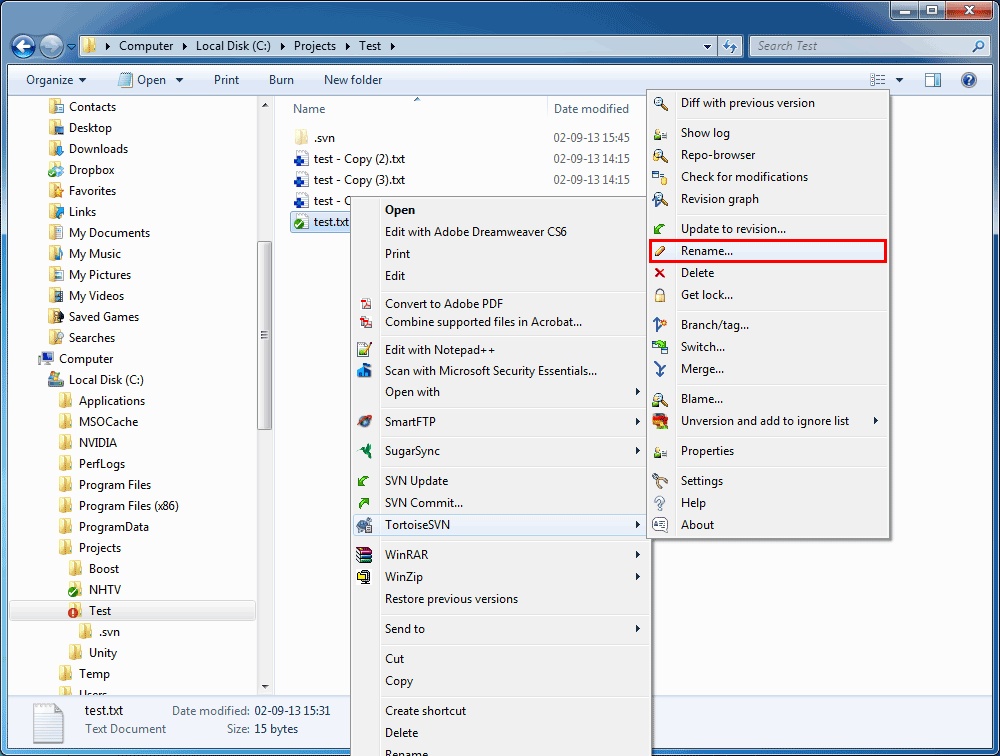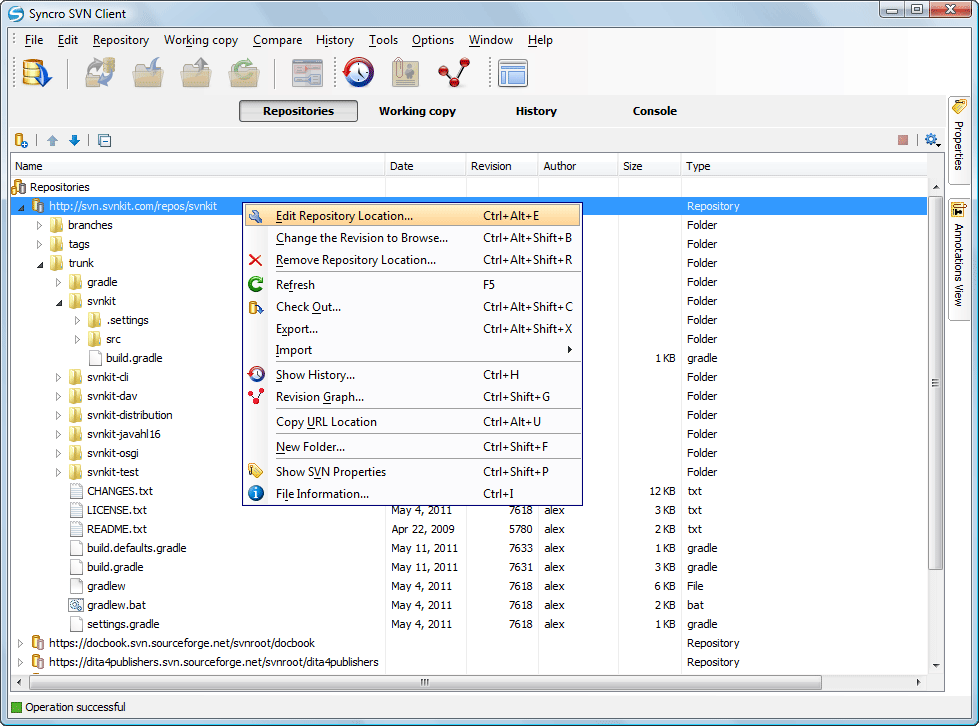I need to download the files at onto my Windows system. I installed svn for Windows, and tried. Oct 20, 2017 Download from SVN. (Although you can theoretically download files without Subversion. For the 'URL of repository,' put http://svn.wikimedia.
> On Thu, Dec 27, 2012 at 4:40 PM, Qin, Xiaohong wrote: >> >> I would like to upgrade iproute2 to the latest version ( release). How to install iproute2 ubuntu. You can either add raring to your sources.list and mess around with apt-pinning to pull iproute from there with apt-get, you can download the raring deb and install it with dpkg, or you can pull the raring iproute source and rebuild it. > From: [mailto:] On Behalf Of Tom H > Sent: Thursday, December 27, 2012 2:09 PM > To: Ubuntu user technical support, not for general discussions > Subject: Re: How to upgrade iproute2 to the latest version? -- ubuntu-users mailing list Modify settings or unsubscribe at: -- ubuntu-users mailing list Modify settings or unsubscribe.
Deleting files and folders Use TortoiseSVN → Delete to remove files or folders from Subversion. When you TortoiseSVN → Delete a file or folder, it is removed from your working copy immediately as well as being marked for deletion in the repository on next commit. The item's parent folder shows a “ modified” icon overlay. Up until you commit the change, you can get the file back using TortoiseSVN → Revert on the parent folder.

If you want to delete an item from the repository, but keep it locally as an unversioned file/folder, use Extended Context Menu → Delete (keep local). You have to hold the Shift key while right clicking on the item in the explorer list pane (right pane) in order to see this in the extended context menu. If an item is deleted via the explorer instead of using the TortoiseSVN context menu, the commit dialog shows those items as missing and lets you remove them from version control too before the commit. However, if you update your working copy, Subversion will spot the missing item and replace it with the latest version from the repository. If you need to delete a version-controlled file, always use TortoiseSVN → Delete so that Subversion doesn't have to guess what you really want to do. Getting a deleted file or folder back If you have deleted a file or a folder and already committed that delete operation to the repository, then a normal TortoiseSVN → Revert can't bring it back anymore. But the file or folder is not lost at all.
If you know the revision the file or folder got deleted (if you don't, use the log dialog to find out) open the repository browser and switch to that revision. Then select the file or folder you deleted, right click and select Context Menu → Copy to. As the target for that copy operation select the path to your working copy. Commit the parent folder Since renames and moves are done as a delete followed by an add you must commit the parent folder of the renamed/moved file so that the deleted part of the rename/move will show up in the commit dialog. If you don't commit the removed part of the rename/move, it will stay behind in the repository and when your co-workers update, the old file will not be removed.

They will have both the old and the new copies. You must commit a folder rename before changing any of the files inside the folder, otherwise your working copy can get really messed up.
Another way of moving or copying files is to use the Windows copy/cut commands. Select the files you want to copy, right click and choose Context Menu → Copy from the explorer context menu. Then browse to the target folder, right click and choose TortoiseSVN → Paste. For moving files, choose Context Menu → Cut instead of Context Menu → Copy. You can also use the repository browser to move items around. Read to find out more. Dealing with filename case conflicts If the repository already contains two files with the same name but differing only in case (e.g.
TEST.TXT and test.txt), you will not be able to update or checkout the parent directory on a Windows client. Whilst Subversion supports case-sensitive filenames, Windows does not. This sometimes happens when two people commit, from separate working copies, files which happen to have the same name, but with a case difference. It can also happen when files are committed from a system with a case-sensitive file system, like Linux.
In that case, you have to decide which one of them you want to keep and delete (or rename) the other one from the repository. Repairing File Renames Sometimes your friendly IDE will rename files for you as part of a refactoring exercise, and of course it doesn't tell Subversion. If you try to commit your changes, Subversion will see the old filename as missing and the new one as an unversioned file.
You could just check the new filename to get it added in, but you would then lose the history tracing, as Subversion does not know the files are related. A better way is to notify Subversion that this change is actually a rename, and you can do this within the Commit and Check for Modifications dialogs. Simply select both the old name (missing) and the new name (unversioned) and use Context Menu → Repair Move to pair the two files as a rename. Deleting Unversioned Files Usually you set your ignore list such that all generated files are ignored in Subversion.
But what if you want to clear all those ignored items to produce a clean build? Usually you would set that in your makefile, but if you are debugging the makefile, or changing the build system it is useful to have a way of clearing the decks. TortoiseSVN provides just such an option using Extended Context Menu → Delete unversioned items.
You have to hold the Shift while right clicking on a folder in the explorer list pane (right pane) in order to see this in the extended context menu. This will produce a dialog which lists all unversioned files anywhere in your working copy. You can then select or deselect items to be removed. When such items are deleted, the recycle bin is used, so if you make a mistake here and delete a file that should have been versioned, you can still recover it.
Copying/Moving/Renaming Files and Folders It often happens that you already have the files you need in another project in your repository, and you simply want to copy them across. You could simply copy the files and add them, but that would not give you any history.
And if you subsequently fix a bug in the original files, you can only merge the fix automatically if the new copy is related to the original in Subversion. The easiest way to copy files and folders from within a working copy is to use the right drag menu. When you right drag a file or folder from one working copy to another, or even within the same folder, a context menu appears when you release the mouse. Now you can copy existing versioned content to a new location, possibly renaming it at the same time. You can also copy or move versioned files within a working copy, or between two working copies, using the familiar cut-and-paste method. Use the standard Windows Copy or Cut to copy one or more versioned items to the clipboard. If the clipboard contains such versioned items, you can then use TortoiseSVN → Paste (note: not the standard Windows Paste) to copy or move those items to the new working copy location.
Restore Svn Repository From Files

You can copy files and folders from your working copy to another location in the repository using TortoiseSVN → Branch/Tag. Refer to to find out more. You can locate an older version of a file or folder in the log dialog and copy it to a new location in the repository directly from the log dialog using Context menu → Create branch/tag from revision. Refer to to find out more. You can also use the repository browser to locate content you want, and copy it into your working copy directly from the repository, or copy between two locations within the repository. Refer to to find out more.
Cannot copy between repositories Whilst you can copy or move files and folders within a repository, you cannot copy or move from one repository to another while preserving history using TortoiseSVN. Not even if the repositories live on the same server.
All you can do is copy the content in its current state and add it as new content to the second repository. If you are uncertain whether two URLs on the same server refer to the same or different repositories, use the repo browser to open one URL and find out where the repository root is. If you can see both locations in one repo browser window then they are in the same repository.